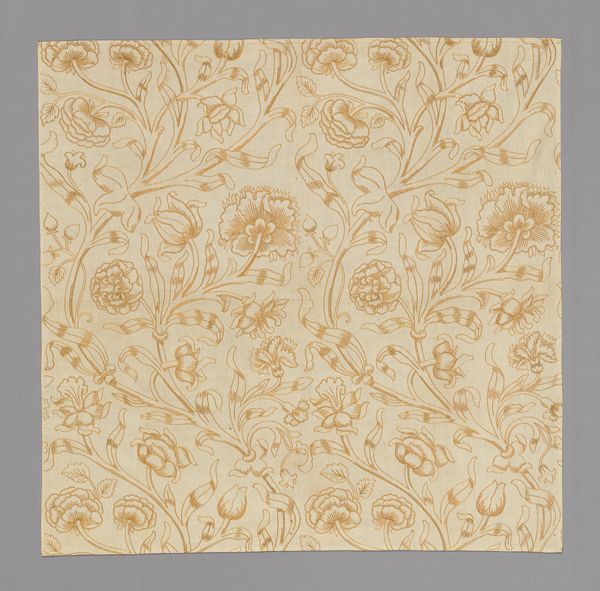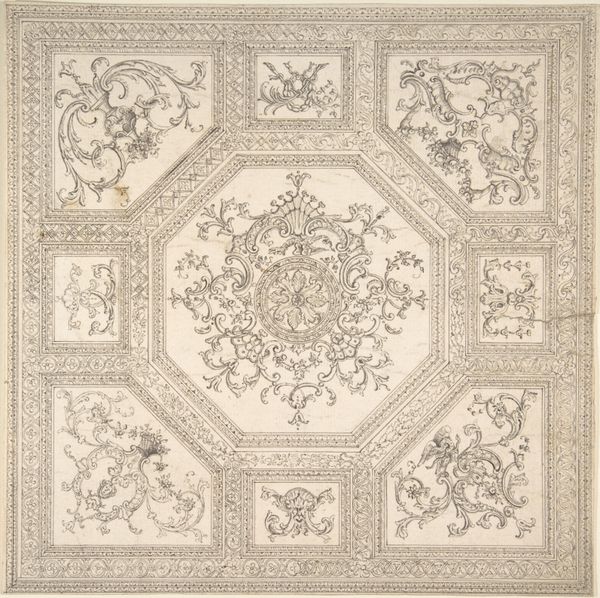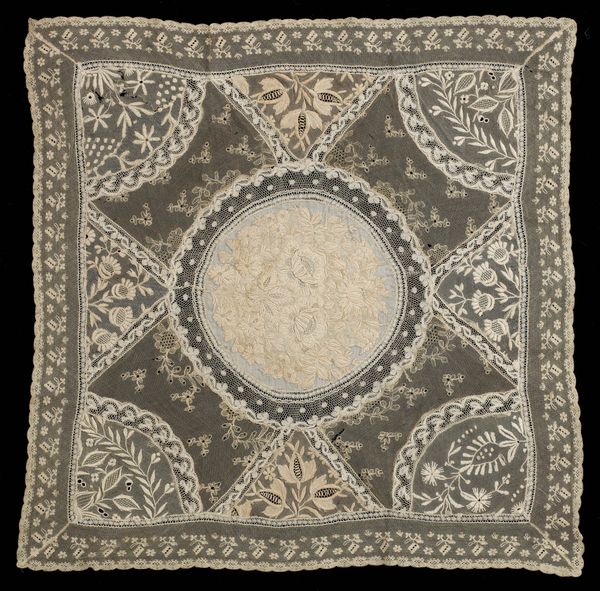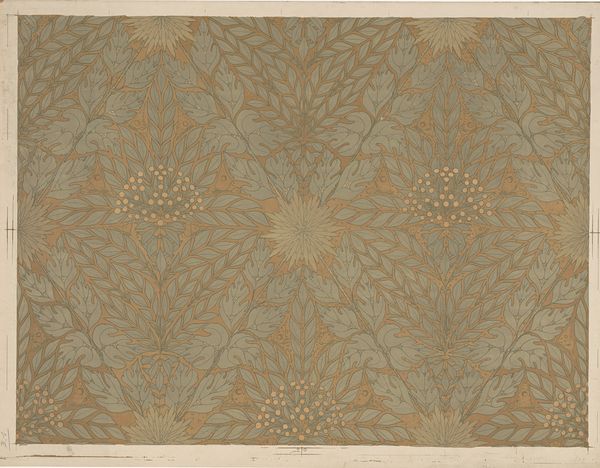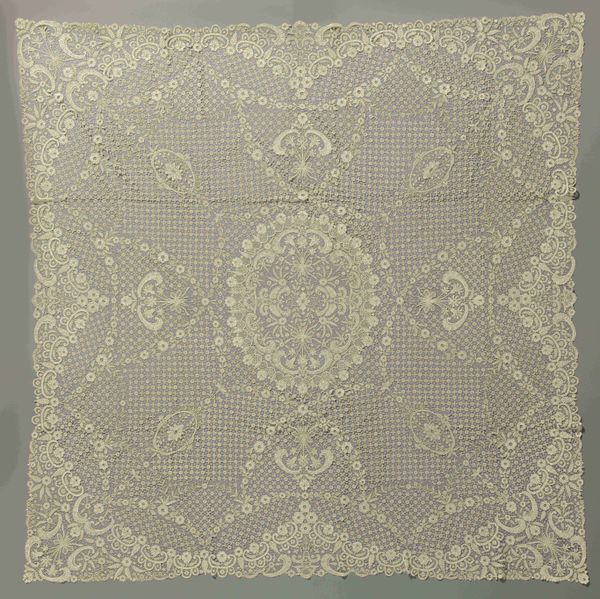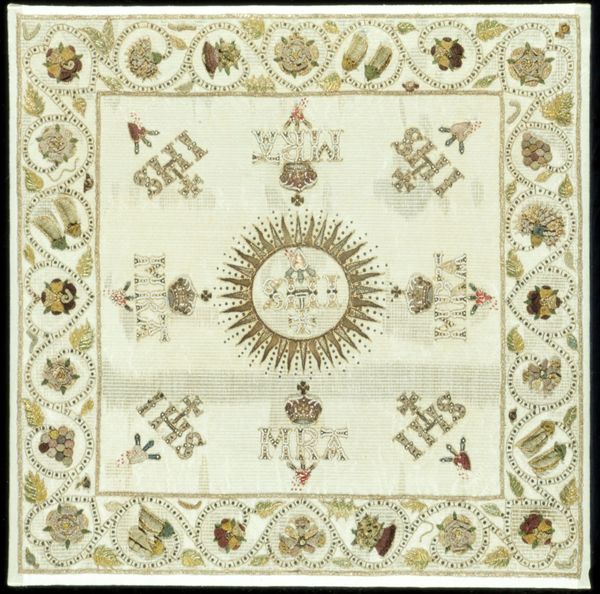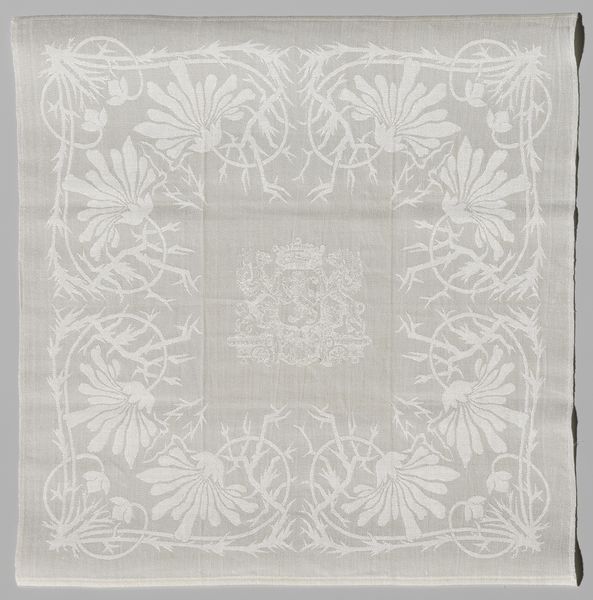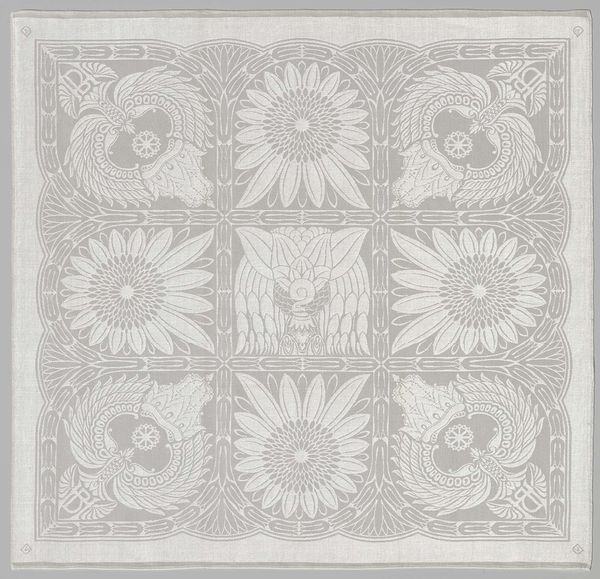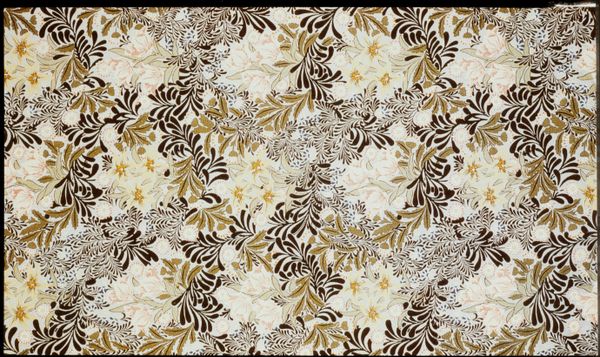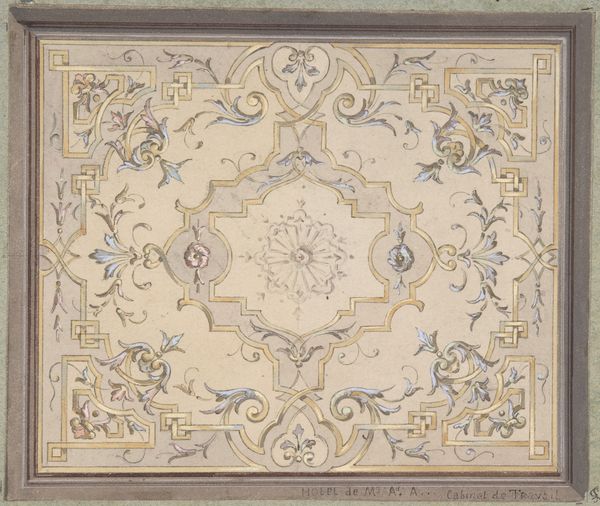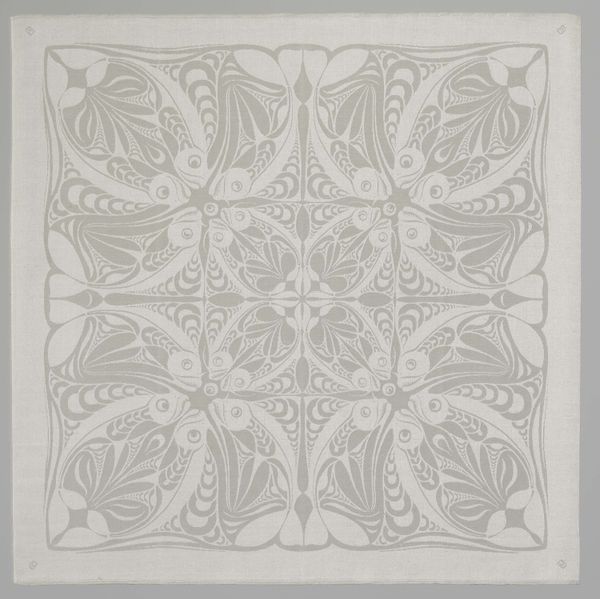
textile
#
textile
#
decorative-art
Dimensions: 61 x 61 in. (154.94 x 154.94 cm)
Copyright: Public Domain
Curator: Let's turn our attention to this silk "Coverlet," created around 1700. Its maker is anonymous. Editor: It has such a lovely, faded opulence, like a dream half-remembered. I'm struck by the craftsmanship required to render all these flowing forms—how did the textile workers of the day feel about the repetition, the long hours? Curator: That repeated motif – often referred to as a paisley – has travelled through time and space, taking on different cultural meanings. It originates in Persia and spread through the Silk Road into India, becoming especially popular in Kashmir. Later, Europeans – mainly the British – imitated it, using new industrial technologies and disseminating its imagery even further. Each repetition subtly alters its inherited symbolic weight. Editor: Industrial production always shifts the terrain of cultural symbols, cheapening and alienating their origin in tandem with new markets. How remarkable is it that we still perceive a kind of artisanal character here despite these forces! Was it made with hand looms? What dye processes gave it these subtle tones? Curator: It is speculated that many patterns like this bear ancient fertility symbols within them. Notice how some of the paisley forms are pregnant with other designs, seeds blossoming forth from within. And even this muted, aged palette—imbued with warmth—suggests ripeness, plenitude, fecundity... all tied to the idea of providing comfort and abundance. Editor: Right, like the maker imagined it breathing life, warmth, and promise onto those sleeping beneath it! What a thought. I wonder about the silk farms themselves, the labor behind this… so easily concealed by these elegant flourishes. Curator: These objects have deep memories ingrained into their forms – histories of hands at work, cultures merging, and desires for protection and blessing. They hold a strange power. Editor: A power tempered, of course, by the socio-economic disparities always embedded within craft. I do agree there's magic woven here, yet a bittersweet feeling remains when I imagine the anonymous individuals who lent their skill to its production. Curator: Well, regardless, it serves as a testament to our enduring drive to enshroud ourselves and our homes in beauty. Editor: And to ponder, even momentarily, what hands created the objects of our daily lives. Thank you.
Comments
minneapolisinstituteofart almost 2 years ago
⋮
Early homes consisted of a single large room in which all household activities took place. The first bedrooms were little more than a small closet where the lord of the 'manor' could go to escape the hubbub of domestic life and to conduct business in private. As landholders became more prosperous houses grew larger, and the number and size of bedrooms increased accordingly. In the homes of nobility and the upper classes throughout Europe, the bedroom was more than a sleeping chamber; it was also a place to entertain visitors. Quite often a woman might receive her friends in her room, presiding over the gathering from her bed, while the ladies sat nearby sipping tea or working on their embroidery. This lavishly embroidered quilt would have been part of a 'receiving set' used on such an occasion, providing evidence of the family's wealth and prestige.
Join the conversation
Join millions of artists and users on Artera today and experience the ultimate creative platform.
